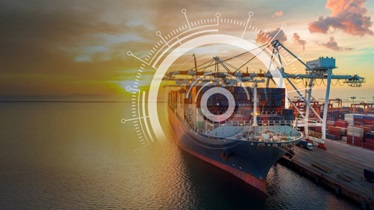Bunkering, equipment, and supply
Organisations that service vessels with parts, supplies, fuel, or crew must monitor the location and expected route and timings of ships and fleets to anticipate where and when vessels require an order to be fulfilled.
Knowing each vessel’s characteristics and how frequently delays occur on certain routes are also crucial to predict the level and range of supplies that could appear on the order so that supplies can be brought to the agreed port quickly and efficiently.
Tracking risks factors
A bunker trader is tasked with locating customers and negotiating and closing deals. They often spend a huge amount of their time tracking vessel destinations and ETAs to allow them to support existing accounts satisfactorily.
But this is fraught with difficulties. Constant monitoring takes up unnecessary time and effort and the data is still often incomplete and inaccurate – less than half of all vessels report their next port of call and estimated time of arrival accurately, according to our AIS data analysis.
A total of 63% of vessels published one port destination but went to another and vessels change their destinations or ETAs five times during a voyage on average.
What’s more, a total of 32% of all destinations were missing while 36% of all ETAs were missing. Meanwhile, at the beginning of a new voyage, a vessel often continues sailing with the previous destination and/or ETA. Incomplete data may even be caused by something as innocuous as misspelling the name of the destination port.
And ship operators sometimes deliberately enter incorrect destinations and ETAs to confuse competitors, create a cover for illicit activities, or protect themselves from piracy.
So, what can you do?
Insight around new patterns of trade and changes in typical routes and port calls can present new business development opportunities – if recognised well enough in advance.
This in-depth knowledge is all the more important because the fuel bunker market is characterised by high volumes and low margins and it is challenging to deliver heavy fuel oil safely and in compliance with regulations.
To win more business, bunker traders need to approach new customers proactively by obtaining greater visibility on where vessels currently serviced by competitors are likely to be and when they might be getting there.
Fleet awareness
We provide independent insight into broad market trends, as well as individual vessel and fleet characteristics, ownership and behaviours, so you can make critical decisions and gain commercial advantage.
Our Predictive Fleet Analytics lets you know where a vessel is going and when it will arrive so you can proactively position new services at upcoming destinations for existing customers.
With our support, you will have information on the events and trends of each trade lane or route, port information, such as facilities and capacity, and how frequently delays occur on certain routes.
This, for example, allows you to contact a prospect and say: ‘We can see you are arriving at X in five days and see that you are due a service/replenishment/survey. If you like, we can book it in now?’
Predicting and capitalising on opportunities is essential if you are to thrive in today’s competitive environment.

